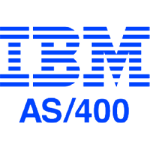Connect Vertica Analytics Platform to AS400


About Vertica Analytics Platform
Extract, transform, and load data to Vertica. Ingest data from Vertica and load to other destinations.
About AS400
AS400 is a computer system with an embedded database from IBM that dates back to 1988. The IBM AS/400 system was once popular with small and medium businesses but now lacks the functionality and features of modern data platforms like IBM Db2, rendering it ineffective for many users.
Popular Use Cases
Bring all your AS400 data to Amazon Redshift
Load your AS400 data to Google BigQuery
ETL all your AS400 data to Snowflake
Move your AS400 data to MySQL
Vertica Analytics Platform's End Points
Vertica Massively Parallel Processing (MPP)
Vertica Column-Oriented Storage
Vertica Workload Management Automation
Vertica Machine Learning Capabilities
Vertica In-Built Analytics Features
Vertica SQL-Based Interface
Vertica Shared-Nothing Architecture
Vertica High Compression Features
Vertica Kafka and Spark Integrations
Vertica Cloud Platform Compatibility
Vertica Programming Interface Compatibility
Vertica Third-Party Tool Compatibility
AS400's End Points
Table of Contents
- Connect AS400 to Db2 for a single source of truth
- Extract and load data from AS400 quickly
- Integrate.io has the AS400 data integrations you need
- How Integrate.io customers power growth with its AS400 connector
- Get started moving data in minutes
- Why choose Integrate.io for AS400 data integration?
- Get started on AS400 data integration
- Explore our AS400 resources
Connect AS400 to Db2 for a single source of truth
- Moving AS400 data to Db2 provides a single reference point for marketing data.
- You can also load marketing data from other platforms to Db2 and access this critical information in one central location.
- After loading marketing data in Db2, you can push it through BI tools and learn more about customers, e-commerce transactions, and campaigns on real-time dashboards, summaries, and other data visualizations. Share metrics and key performance indicators with stakeholders for improved marketing performance.
ETL data from AS400 quickly
- Integrate.io extracts data from AS400 and places it in a staging area.
- The no-code data pipeline loads AS400 to Db2 via its SSL connector.
- Benefit from Db2's high availability, modernization, storage, analytics, disaster recovery, and database replication features.
Alternatively, you can pull data into AS400 if you still rely on this legacy system for business purposes. Integrate.io's bi-directional ETL connector lets you use AS400 as a data destination and a source. Set up an ETL trial meeting to discover how Integrate.io's AS400 connection satisfies your data-driven needs.
Integrate.io has the AS400 data integrations you need
Examples of Integrate.io AS400 data integrations
- Transfer AS400 data to IBM Db2
- Pull data into AS400 from sources
How Integrate.io customers power growth with its AS400 connector
- Integrate.io removes data silos from AS400, allowing customers to move data sets to Db2 for powerful performance and analytics. By eliminating silos, businesses can improve data visibility and quality and learn more about internal processes.
- Integrate.io's streamlined workflows automate AS400 integration by managing and preparing data sets. Data teams don't need to build pipelines from scratch and can focus on other tasks.
- Moving data from AS400 to Db2 via Integrate.io can improve compliance with data governance regulations. The newer IBM system allows customers to adhere to GDPR, CCPA, and other standards and avoid expensive government penalties for data protection non-compliance.
- Integrate.io's pre-built connector for AS400 removes human error during data integration. That results in better delivery outcomes for data teams and improves business processes.
Get started moving data in minutes
Why choose Integrate.io for AS400 data integration?
Talk to an Integrate.io team member via phone, email, or chat at any time. You can also access online resources, tutorials, and docs.
Change data capture
Integrate.io also performs fast change data capture (CDC), helping you discover database changes instantly and removing the need for bulk load updating.
Pre-built connectors
Integrate.io's pre-built connectors can move data to/from systems other than AS400. Find connections for relational databases, transactional databases, web services, business applications, SaaS tools, ERP systems, CRM systems, and Db2 itself.
REST API connector
Integrate.io has a wide range of connectors for sources and destinations, and you can also create your own if you don't see one listed for your use case using the platform's REST API connector, which can fetch data from almost any source that has a REST API.
Get started on AS400 data integration
Explore our AS400 resources
Integrate Vertica Analytics Platform With AS400 Today
The no-code pipeline platform for
your entire data journey
TRY IT FREE FOR 14-DAYS

Integrates With
Get Started On Your
Data Integration Today
Powers your company decision making
and operational systems with our one-stop
ETL and data integration platforms
TRY IT FREE FOR 14-DAYS





